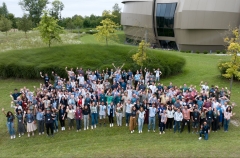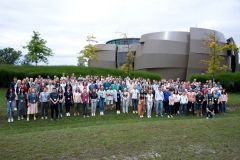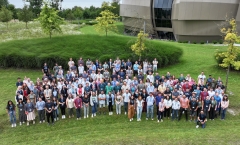NEW HEIGHTS IN PLANET FORMATION
15 - 19 JULY 2024
GARCHING NEAR MUNICH, GERMANY
Planet-forming disks can nowadays be probed with unprecedented detail thanks to facilities, such as ALMA at sub-millimeter wavelengths or high-contrast imaging instruments in the near-infrared such as the VLT/SPHERE instrument. In the past decade these facilities have transformed the field of planet formation enabling both moderate resolution statistical disk surveys and high resolution imaging studies of disks.
Today our field is driven by observations, and it seems to be continuing along this path with JWST upcoming results and the many recently accepted Large Programs in the field of planet-formation that are ongoing at different facilities. Theory and models are faced with the task of explaining much more complex scenarios of disk evolution, planet formation, planet-disk interaction.
With this workshop we aim to bring together observers with expertise in different wavelength regimes, theorists, and modellers, to review our state of the art, pin-point the main open questions, and explore new venues.
The main topics that we plan to address are the following:
• How, when and how fast do planets form? What observational constraints do we have and how do they compare with predictions from different planet formation theories?
• Can we detect forming planets through direct imaging and high-resolution kinematical studies? What are the strengths and limitations of such techniques?
• Planet-disk interaction: do our theoretical predictions match the observations?
• Planets form in evolving disks: what have we learned from disk population studies and what is still missing, both in the models prediction and in the observations? What is driving disk evolution all the way to disk dispersal?
• How important is the effect of the environment both on disk evolution, and on the process of planet-formation? What are the prospects of studying planet forming disks in further away and harsher environments?
• How can we use chemistry as a tool to constrain planet-formation by comparing observations of molecular tracers in disks and around exo-planets? What is the fundamental contribution of JWST and what are the prospects?
The workshop will be held at the ESO headquarters in Garching near Munich from Monday afternoon until Friday, at lunch time.
E-mail: dustbusters at eso dot org




